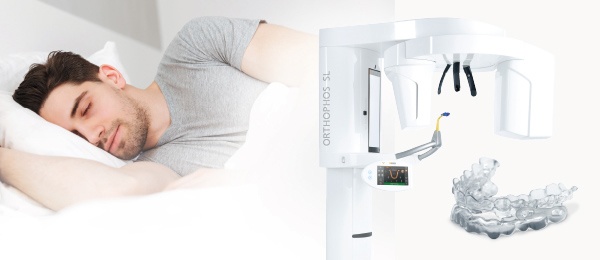Prevalence of calcified carotid artery atheromas on radiographs of patients after first heart attack
Panoramic radiography (PR) is a common imaging technique used to diagnose disease in jaws and teeth. PR also can be used to detect calcified carotid artery atheromas (CCAAs). Researchers conducted a case-control study to determine whether the prevalence of CCAAs on PRs was higher in patients who had undergone a first myocardial infarction (MI). The study findings were published online November 15, 2017, in Oral Surgery Oral Medicine Oral Pathology Oral Radiology.
The study was composed of a subsample of participants in the Swedish multicenter PAROKRANK (periodontitis and its relation to coronary artery disease) study. After applying exclusion criteria, the researchers enrolled 696 case patients (562 men, 134 women) with a first MI and 696 healthy control participants (562 men, 134 women) matched for age, sex, and residential region. All participants underwent thorough medical and oral examinations, including PR. The mean (standard deviation [SD]) age of male participants was 61 (8) years, and the mean (SD) age of female participants was 64 (7) years.
Two experienced oral and maxillofacial radiologists interpreted the radiographs independently. They were blinded to all participant information, including group (case or control) and sex. Analog radiographs were evaluated in a dimly lit room with hot-spot illumination and binoculars for magnification. Digital radiographs were evaluated in a dimly lit room with either Preview (Apple) or OsiriX MD (Pixmeo) software depending on the format used to transfer the radiographs from the centers.
The radiologists recorded calcifications in the area of the carotid artery as CCAAs, and they assessed CCAAs per neck side (that is, 2 per participant) and per participant (present or not). The κ values on the neck-side level were 0.78 for individual measures and 0.74 for paired measures. The κ value per participant assessment was 0.75.
Of the 696 case patients, 235 (33.8%) had CCAAs on the PRs, the authors wrote. In comparison, 192 of 696 participants (27.6%) in the control group had CCAAs on the PRs (odds ratio [OR], 1.22; 95% confidence interval [CI], 1.04 to 1.44; P = .012). CCAAs were detected on the PRs of 184 of 562 male case patients (32.7%) compared with 149 of 562 male control patients (26.5%) (OR, 1.24; 95% CI, 1.03 to 1.48; P = .022). Of the 134 female case patients, 51 (38.1%) had CCAAs detected on the PRs, whereas 43 of 134 female control patients (32.1%) had CCAAs detected on the PRs (OR, 1.19; 95% CI, 0.86 to 1.65; P = .306).
Among all case patients, 99 of 696 (14.2%) had bilateral CCAAs, which was significantly more than 66 of 696 (9.5%) among all control patients (OR, 1.64; 95% CI, 1.17 to 2.29; P = .004), the authors wrote. Of the 562 male case patients, 70 (12.5%) had bilateral CCAAs on the radiographs compared with 50 of 562 (8.9%) male control patients (OR, 1.53; 95% CI, 1.04 to 2.26; P = .032). Among female case patients, 29 of 134 (21.6%) had bilateral CCAAs on the PRs compared with 16 of 134 (11.9%) female control patients (OR, 1.99; 95% CI, 1.008 to 3.91; P = .047).
The study findings show that the prevalence of CCAAs on PRs was significantly higher in case patients with a first MI than in healthy control patients. The difference between groups was even more pronounced for bilateral CCAAs, the authors wrote. No significant prevalence differences were observed between male and female participants. The authors concluded that detection of a CCAA on a PR could serve as a risk indicator for future cardiovascular events; however, further investigation of the long-term value is necessary.
Read the original article here.
Assessing brain responses of males and females to food stimuli
Females have been reported to have higher rates of obesity and being overweight, as well as having eating disorders, than males. In addition, the literature contains many studies reporting sex differences in response to food stimuli. Some studies, however, have reported inconsistent findings. Researchers conducted a meta-analysis to evaluate whether neurobiological differences exist between males and females with regard to brain region responses to food stimuli. The results were published online May 27 in Obesity Reviews.
The researchers conducted an online search of PubMed and Scopus databases for studies published up to 2017 that pertained to neuroimaging studies, sex, and food. They also hand searched reference lists of relevant publications. The literature search yielded 536 studies. After deleting duplicates and irrelevant studies, the investigators conducted a full-text review of 22 articles. Fourteen of these studies were excluded for various reasons, leaving 8 studies with a total of 231 participants for the meta-analysis.
All studies included in the meta-analysis reported participants’ ages, sex, and body mass index (BMI); the stimuli used; the imaging modality; the statistical threshold; the number of brain coordinates reported; and whether male or female participants experienced a greater brain response to the stimuli.
The number of participants in each study ranged from 16 through 49, and the number of male and female participants was equal or nearly equal in all studies. The mean age of male participants ranged from 12.9 through 46.5 years, and the mean age of female participants ranged from 12.7 through 48.0 years. The 8 studies in the meta-analysis reported BMIs ranging from 18.3 through 36.2 kilograms per square meter for male participants, and from 20.8 through 36.9 kg/m2 for female participants.
To investigate the possibility of sex differences in brain responses to food stimuli, the researchers used the activation likelihood estimation approach, which determines the consistency of brain activation coordinates reported from different studies by means of probability distribution modeling.
To improve spatial resolution, the researchers used stereotaxic coordinates of reported brain activations rather than anatomic labels covering a broad area. They considered a brain voxel to be significantly activated if P < .001, and the cluster size was 200 cubic millimeters or greater.
Food images were used in 4 studies, audio stimuli were used in 1 study, and actual food stimuli were used in 4 studies, the authors wrote. All studies used functional magnetic resonance imaging as the imaging modality. They reported 3 through 41 peak voxel coordinates of brain activation. Of the 8 studies, 1 reported that male participants had larger brain responses than female participants; 4 reported that female participants had larger brain responses than male participants; and 3 reported mixed results (that is, male participants had larger responses in some areas, while female participants had larger responses in other areas).
The meta-analysis showed 2 significant clusters—namely, the anterior and middle cingulate—where male participants had a greater response than female participants. Similarly, female participants had a greater response than male participants in the parahippocampus/thalamus and precuneus. These findings suggest that “there might exist different underlying neurobiological mechanism[s] of food stimuli processing between the sexes,” the authors wrote.
The researchers concluded that males and females have differential responses to food stimuli in various structures of the brain. Moreover, these neural correlates may help explain sex differences in eating behavior that could be relevant to obesity.
Read the original article here.
Estimating radiation doses and risks in children undergoing CBCT or 2D radiography
Radiation exposure during dental radiographic procedures is low. However, children are more sensitive than adults to ionizing radiation. The objective of this retrospective study was to estimate radiation doses and risks for a pediatric population undergoing cone-beam computed tomography (CBCT), 2-dimensional radiography, or both. The study was published in the June issue of European Journal of Radiology.
This retrospective cohort study was conducted in 5 oral radiology departments in Romania and France. Participants included 7,150 children and young adults (age range, 0-22 years) who underwent at least 1 radiologic examination (CBCT or 2D radiography) from January 1, 2014, through December 31, 2015. Study inclusion required the following information: age and sex, type of radiologic examination and equipment used, and exposure protocol (field of view, kilovolts, milliamperes).
The researchers divided the children into 2 groups. The first group included children and young adults who underwent CBCT (with or without 2D radiography), and the second group was made up of those who underwent 2D radiography only. The CBCT group included 1,009 children and young adults, 71.4% of whom underwent 1 CBCT procedure, and 28.5% of whom underwent 2 or more CBCT procedures; 2% also underwent 2D radiography during the 2-year study period. The researchers also classified participants according to their ages at the time of the radiographic procedures.
During the study, 12,252 radiologic examinations were performed (intraoral, 4,220; cephalometric, 1,324; panoramic, 5,284; and CBCT, 1424), the authors wrote.
The researchers used 3 methods to estimate radiation risk: the relative radiation level (RRL), estimation of the lifetime attributable risk (LAR) for cancer incidence, and the background equivalent radiation time (BERT). The individual LAR represents the number of cancer cases per 100,000 people exposed to a single radiation dose of 0.1 gray. BERT is the amount of radiation received from a radiologic procedure expressed in terms of the number of days of background radiation. The researchers used RRL to compare the amount of radiation delivered during the dental appointments with a variable effective dose.
The study findings showed that the median effective doses for the 2D exposures were lower than 20 microsieverts, representing the lowest range of RRL. By contrast, the median effective doses for the CBCT group ranged from 51.5 µSv through 204.8 µSv for participants aged 0 through 18 years. The researchers observed a significantly higher (P < .0001) individual cumulative dose in the CBCT group among children aged 11 through 14 years than among those in other age groups. In addition, the cumulative dose for repeated CBCTs was significantly higher than that for a single CBCT exposure (median ± interquartile range, 309.4 ± 222.1 μSv and 121.2 ± 118.2 μSv, respectively) (P < .05), and it exceeded 1 mSv in children with multiple CBCT exposures.
Regarding radiation risk, the study results showed a higher LAR in the CBCT group than in the 2D group for all age groups. Similarly, BERT was higher among participants in the CBCT group (14.5 days of natural radiation for a single exposure and 42.1 days for multiple exposures) than among those in the 2D group (1.5 days).
Moreover, the researchers found a higher per capita collective dose in children who underwent CBCT compared with those who underwent 2D radiography; the difference was statistically significant in children ages 11 through 15 years (P < .0001).
The study results revealed wide variability in radiation doses and risks associated with CBCT in children and young adults. When considering CBCT or 2D radiography, dentists should weigh the benefits and risks according to the patient’s age and pathologic condition, and apply strict selection criteria when opting for CBCT, the authors concluded.
Read the original article here.
Is resin infiltration an effective adjunct to noninvasive treatment of incipient enamel carious lesions in primary molars?
Noninvasive treatment of incipient enamel carious lesions consists of topical fluoride varnish application, along with good oral hygiene instruction and dietary control. Sealants or resin infiltration also can be used as microinvasive adjunctive procedures. In a split-mouth, randomized, prospective clinical trial published in the May/June issue of Pediatric Dentistry, researchers evaluated radiographically the effectiveness of resin infiltration as an adjunct to the criterion standard preventive measures.
Participants consisted of 45 children aged 5 through 8 years who were treated in the pediatric dentistry clinic at Tufts University School of Dental Medicine in Boston, Massachusetts. Study inclusion criteria were a noncontributory medical history, no known allergies to hydrochloric acid or other ingredients in the resin infiltration product, parental willingness to return for follow-up visits, and English-language fluency. Exclusion criteria were any history of chronic disease, abnormalities that affected the tooth structure, or the need for sedation or general anesthesia.
During screening, 1 pediatric dentist obtained all bite-wing radiographs using the same parameters (65 kilovolts, 7 milliamperes, 0.064 seconds’ exposure) and MiPACS (Medicor Imaging) digital radiographs. A digital film holder was used to direct the x-radiation beam between the first and second molars at a 90-degree angle. In addition, a customized bite registration was fabricated for each child.
Two calibrated and trained examiners independently evaluated the radiographs. If they disagreed about the depth of a proximal carious lesion, a third examiner evaluated the radiograph. The radiographs were imported into the MiPACS software and examined in a dark room with no magnification. Lesions that did not cross the dentinoenamel junction were classified as enamel lesions. The examiners classified enamel lesions as E1 if they did not extend beyond one-half the thickness of the enamel, and as E2 if they extended beyond the outer one-half of the enamel thickness but did not cross the dentinoenamel junction. Of the 45 test lesions, 29 (64%) were categorized as E2; similarly, 32 of 45 control lesions (71%) were categorized as E2.
Children who had at least 2 nonadjacent, incipient, proximal enamel lesions in primary molars were included in the study. Of the 90 children screened, 61 were eligible to participate, and 45 agreed to take part. The same pediatric dentist treated all participants.
For the test group lesions, a rubber dam was inserted and topical anesthetic was applied to reduce discomfort. The proximal surfaces were flossed and cleaned, and a dental wedge was placed. Following the manufacturer’s instructions, the dentist applied 15% hydrochloric acid (Icon Etch, DMG America) to the proximal area for 2 minutes. The surface was then rinsed and dried for 30 seconds, followed by a 30-second application of Icon Dry. After removing excess material, the dentist applied the first layer of infiltrating resin (Icon) for 3 minutes. The resin layer was then light cured for 40 seconds.
The dentist applied 5% sodium fluoride varnish to lesions in both the control and test groups. The children returned for follow-up examinations at 6, 12, 18, and 24 months. At each appointment, the children and their parents received oral hygiene instructions and dietary counseling.
Of the 45 participants, 11 were lost to follow-up and 9 were excluded owing to exfoliation of study teeth. At the 24-month follow-up visit, 10 of 25 lesions (40%) in the test group exhibited caries progression compared with 18 of 25 lesions (72%) in the control group (P = .04).
The researchers concluded that resin infiltration as an adjunct to 5% sodium fluoride varnish application, oral hygiene instruction, and dietary counseling was significantly more effective radiographically than use of topical fluoride varnish, oral hygiene instruction, and dietary counseling alone in inhibiting the progression of incipient proximal enamel lesions in primary molars of children aged 5 through 8 years after 24 months.
Read the original article here.
The first fully digital workflow for a more restful sleep
Easily identify patients who will be responders to oral appliance therapy and decrease time-to-therapy with a simple 3-step fully digital workflow.
The Orthophos SL 3D-Ai with MATRx plus, SICAT Air, and OPTISLEEP is a complete 3D solution for the analysis and appliance-based treatment of Obstructive Sleep Apnea (OSA).
This simple sleep solution integrates comparative airway data using the Orthophos SL 3D-Ai by Dentsply Sirona. Adding MATRx plus expands the SICAT Air and OPTISLEEP workflow resulting in a completely digital workflow from airway analysis, diagnostics of OSA, and oral appliance study, to the treatment of OSA with a custom-fitted oral appliance.
Low dose imaging for your practice
Are your patients worried about radiation? Fear not, ADA CE Online has you covered! Take a look at ADA CE Online radiographic imaging courses and learn what you can do to set them at ease. This and other impactful education is available on-demand, 24-7!

The consulting editor for JADA+ Specialty Scan — Radiology is Laurie C. Carter, DDS, Ph.D., Past president, American Academy of Oral and Maxillofacial Radiology. |
|







